Tom's Hardware Verdict
The 2TB Sabrent Rocket nano V2 is a small, portable SSD with surprisingly good sustained performance but weak all-around results. Its metal casing does protect and cool the drive and the 20 Gbps interface offers a nice boost. No QLC here, but ultimately this is still a budget drive.
Pros
- +
Small and lightweight
- +
Reasonably good, sustained performance
- +
4TB capacity
Cons
- -
Weak all-around performance
- -
No IP rating with mediocre warranty
Why you can trust Tom's Hardware
The Sabrent Rocket nano V2 portable SSD is a tiny, lightweight drive up to 4TB that you can easily carry around. It’s very similar to the Corsair EX100U in performance and pricing, with some minor differences. Designed to compete with the best external SSDs, It has TLC flash memory, which is nice, and the embedded design means that it is small and efficient. This flash produces solid sustained write performance, a place where the EX100U eventually falls flat, but the weak UFD controller otherwise holds the nano V2’s performance potential back. This is not significant for many use cases because the USB interface is already restrictive in random performance for heavier workloads.
The 20 Gbps interface is, however, a bonus for traditional sequential workloads such as media file transfers and backups. The tighter and more rugged design of the Rocket nano V2, in contrast to the EX100U, translates to a more reliable experience on the whole, particularly with sustained writes. Direct competitors such as the updated Corsair X6 are stuck with QLC and usually a 10 Gbps interface. The Samsung T7 Shield is also limited to 10 Gbps but is otherwise an excellent portable drive, but it’s also bulkier. The nano V2 is appealing if you need 20 Gbps for burst transfers, high portability with some ruggedness, and a minimum level of sustained write performance.
Specifications of Sabrent Rocket nano V2
| Product | 1TB | 2TB | 4TB |
|---|---|---|---|
| Pricing | $119.99 | $199.99 | $499.99 |
| Form Factor (Internal) | Embedded | Embedded | Embedded |
| Interface / Protocol | USB 3.2 Gen 2x2 (20 Gbps) | USB 3.2 Gen 2x2 (20 Gbps) | USB 3.2 Gen 2x2 (20 Gbps) |
| Bridge Chip(s) | N/A | N/A | N/A |
| Included | Type-C to Type-A and Type-C USB cables | Type-C to Type-A and Type-C USB cables | Type-C to Type-A and Type-C USB cables |
| Controller | Phison U18 | Phison U18 | Phison U18 |
| DRAM | N/A | N/A | N/A |
| Flash/NAND | 128-Layer SK hynix TLC | 128-Layer SK hynix TLC | 128-Layer SK hynix TLC |
| Sequential Read | 1600 MBps | 1600 MBps | 1600 MBps |
| Sequential Write | 1500 MBps | 1500 MBps | 1500 MBps |
| Random Read | N/A | N/A | N/A |
| Random Write | N/A | N/A | N/A |
| Security | N/A | N/A | N/A |
| Resistance | Shock/Vibration | Shock/Vibration | Shock/Vibration |
| Endurance (TBW) | N/A | N/A | N/A |
| Dimensions | 2.85 x 1.28 x 0.57 in. | 2.85 x 1.28 x 0.57 in. | 2.85 x 1.28 x 0.57 in. |
| Weight | 1.76 oz. | 1.76 oz. | 1.76 oz. |
| Part Number | SB-1TB-NAV2 | SB-2TB-NAV2 | SB-4TB-NAV4 |
| Warranty | 3-Year w/registration | 3-Year w/registration | 3-Year w/registration |
The Sabrent Rocket nano V2 is available at 1TB, 2TB, and 4TB. Launch pricing for these capacities is $119.99, $199.99, and $499.99, respectively. This makes the 2TB model the best value, although pricing may change. It is, of course, still far cheaper than the recently-reviewed SanDisk Pro-G40, but a bit more expensive than the updated Crucial X6. It’s very similar to the Corsair EX100U in design and pricing.
The Rocket nano V2 has a 20 Gbps USB 3.2 Gen 2x2 interface and reaches up to 1600/1500 MBps for sequential read and write. Random performance is seldom stipulated for external drives due to interface limitations.
The drive has a 3-year warranty with registration which is not atypical in the industry, although we prefer 5-year for premium products. The drive is very small and lightweight coming in at 2.85 x 1.28 x 0.57 inches and 1.57 ounces, although without the outer silicone shell it’s a bit smaller and lighter. This outer covering does offer better protection against drops.
Software and Accessories of Sabrent Rocket nano V2
The Rocket nano V2 comes with Type-C to Type-A and Type-C to Type-C USB cables. This means it can work on a wider range of devices without you having to buy a separate cable.
As of the time of review, the drive was not supported in Sabrent’s SSD toolbox application, but it may be added later. Sabrent generally offers an OEM version of Acronis True Image Home for its SSDs but this drive is not supported yet. We recommend Macrium Reflect Free for imaging and cloning needs.
Get Tom's Hardware's best news and in-depth reviews, straight to your inbox.
A Closer Look at Sabrent Rocket nano V2
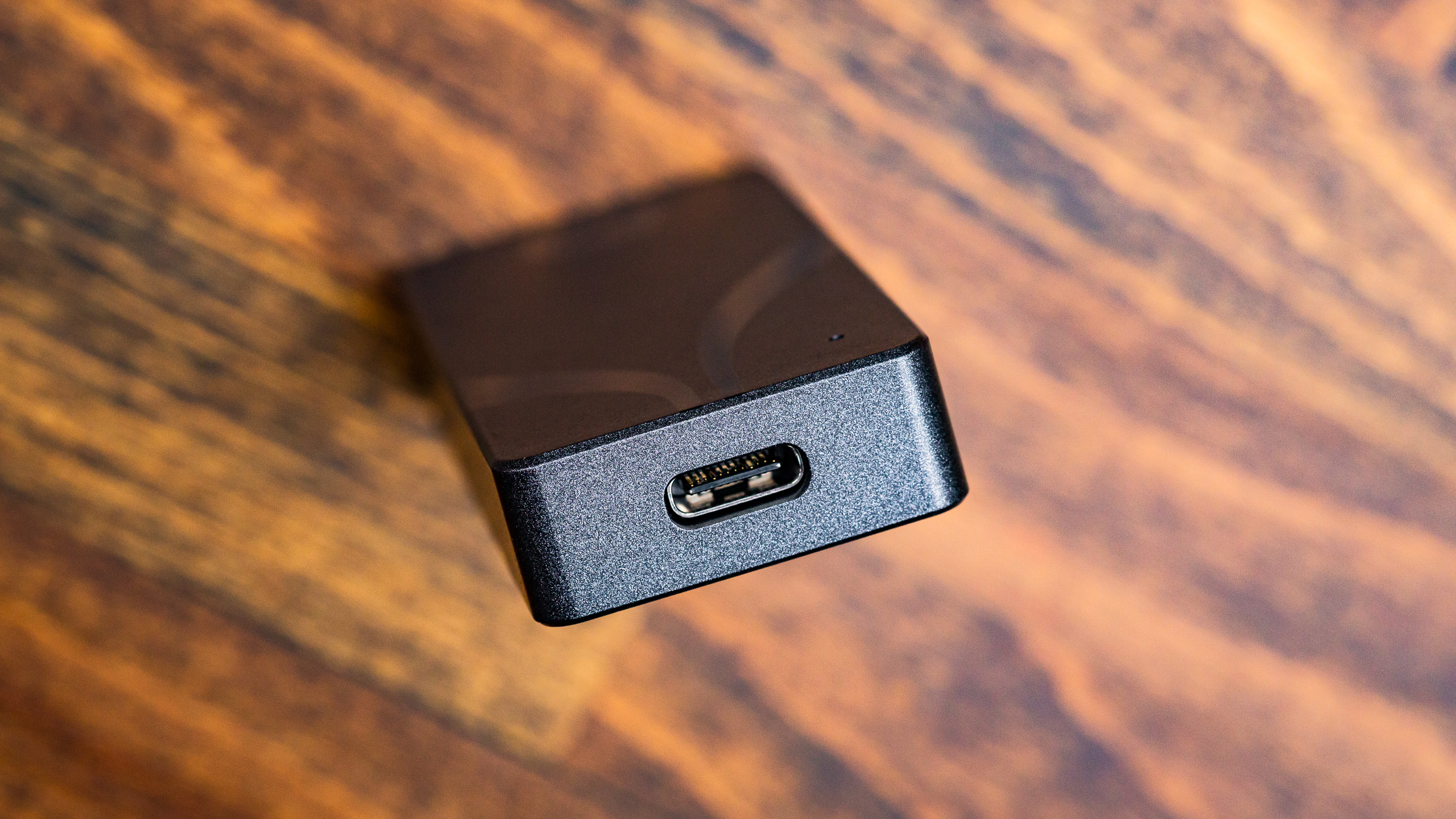
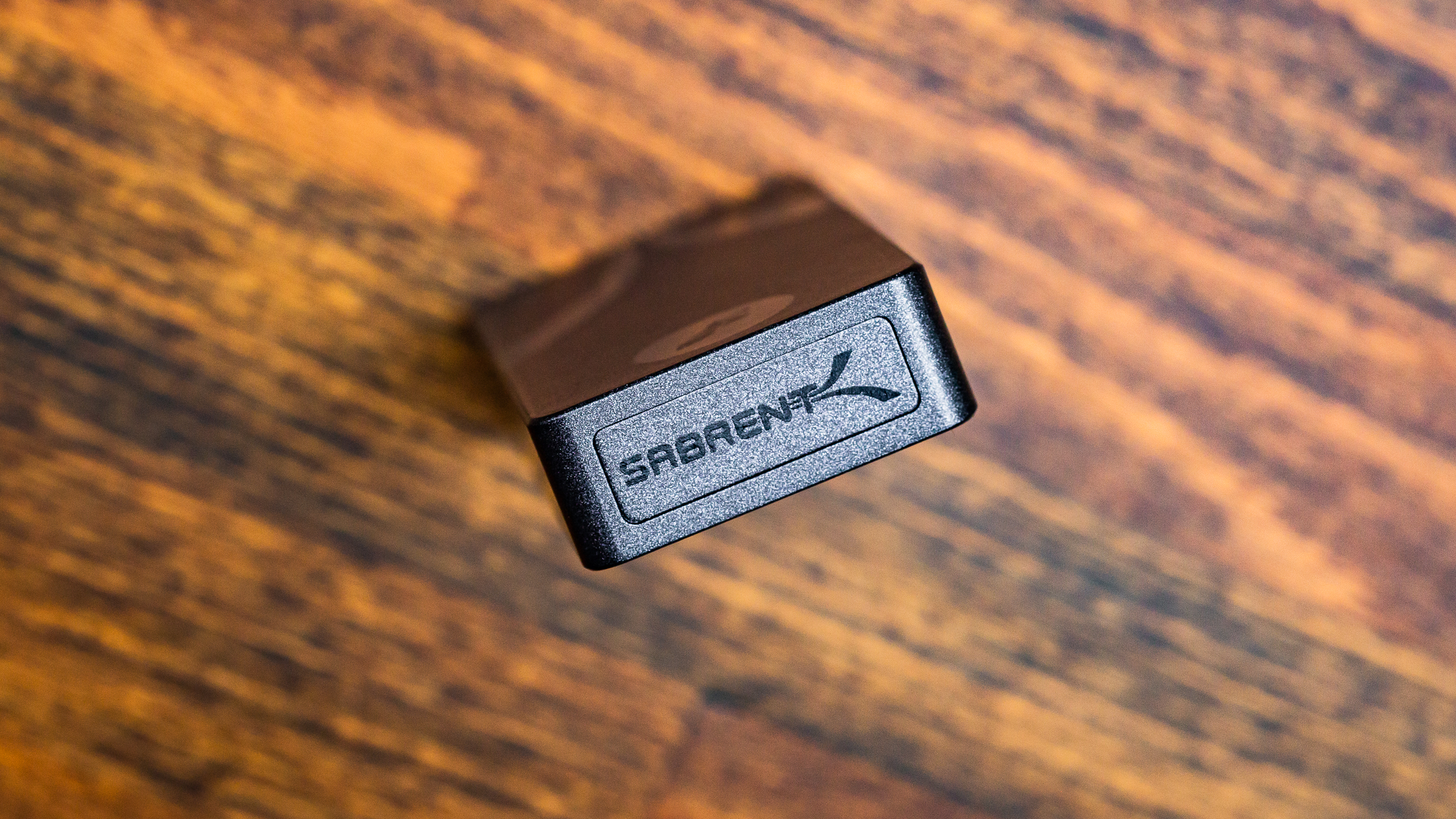
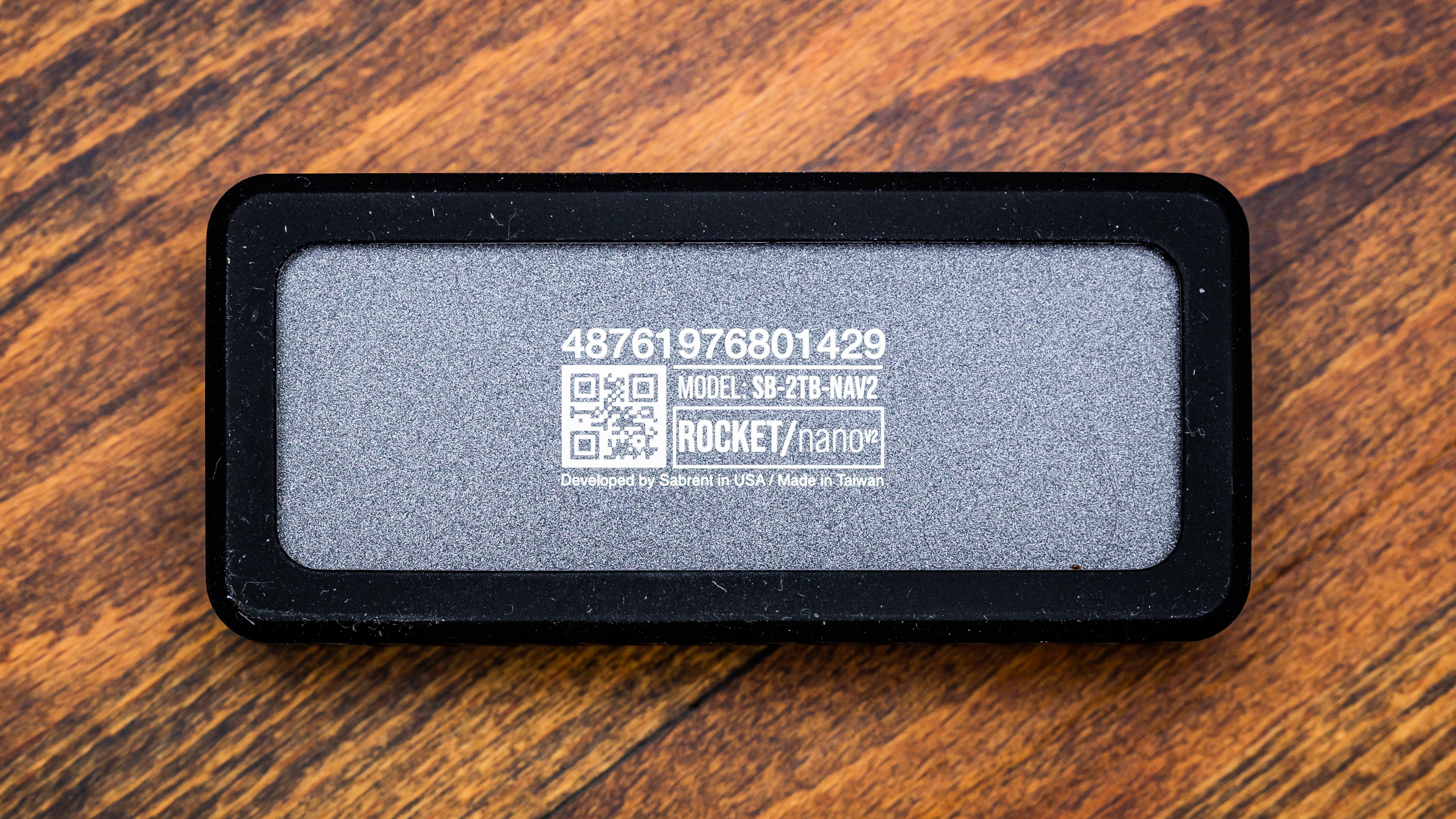
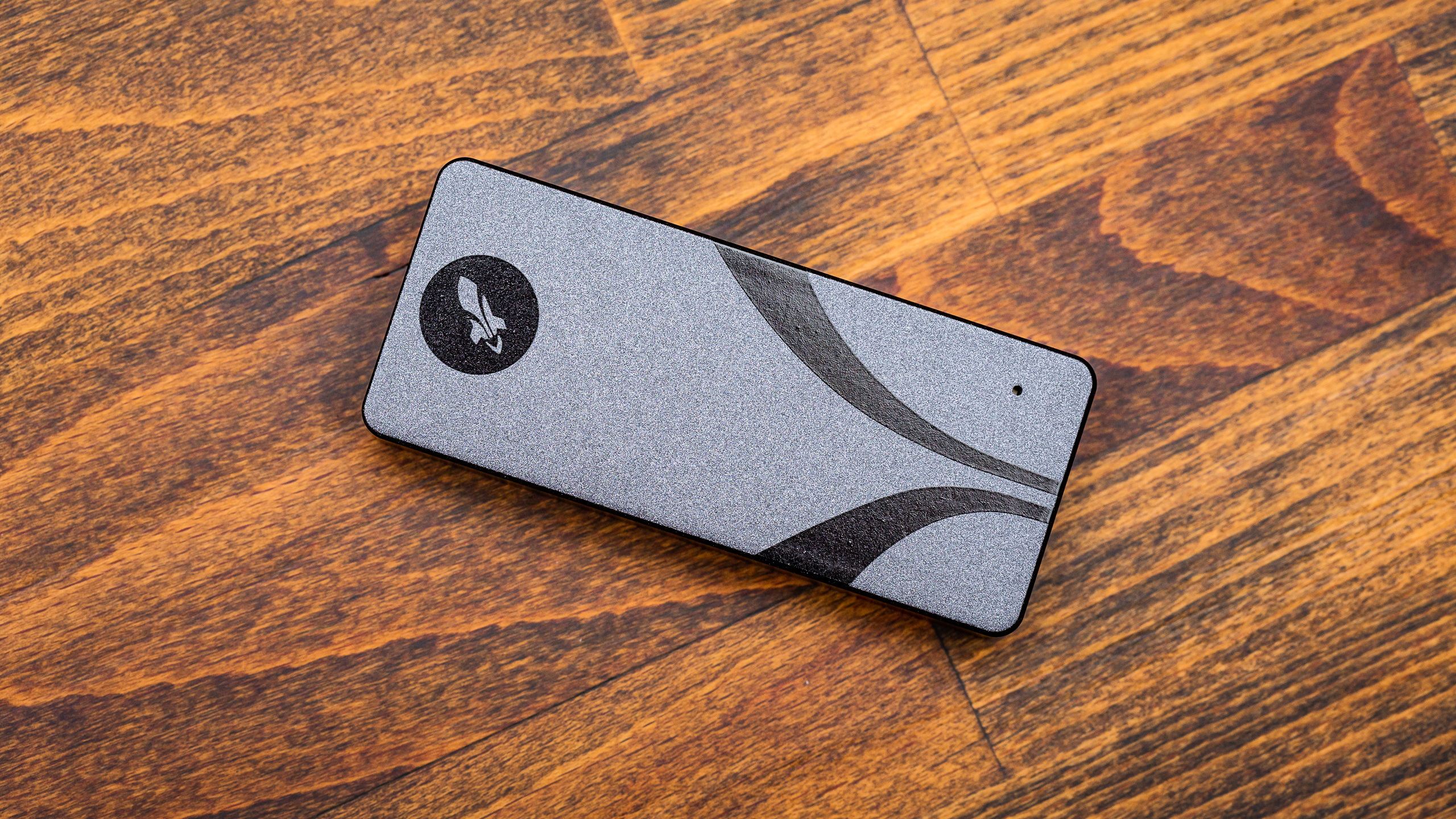
The Sabrent Rocket nano V2 is a simple, small portable SSD. The overall design is muted but pleasant. An optional silicone shroud offers additional protection. It has a single USB-C port that is not waterproof, in a departure from the EX100U’s annoying solution. It should be pointed out that this is a very lightweight drive which makes its high capacity options quite attractive, considering it manages them without using QLC.
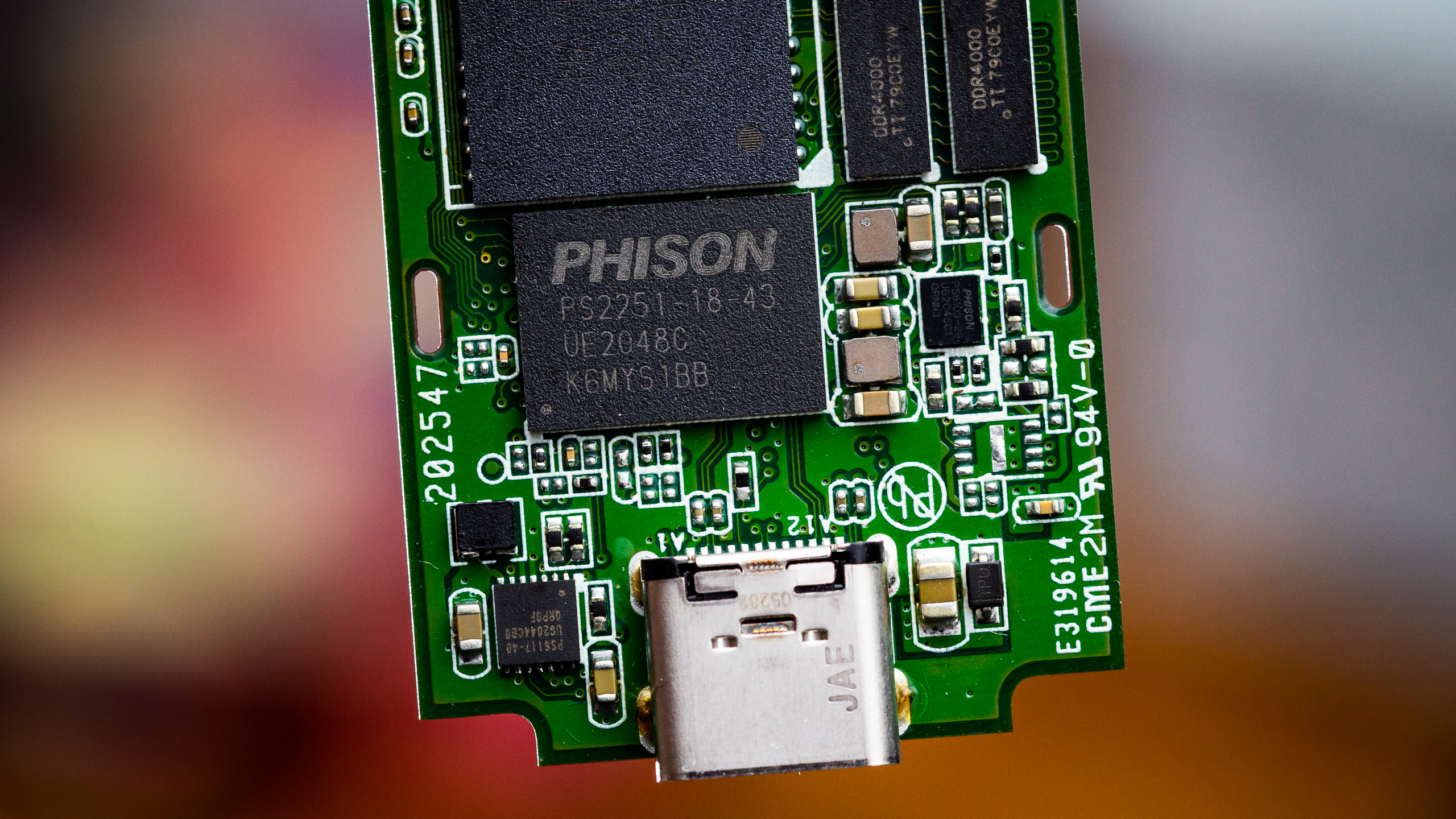
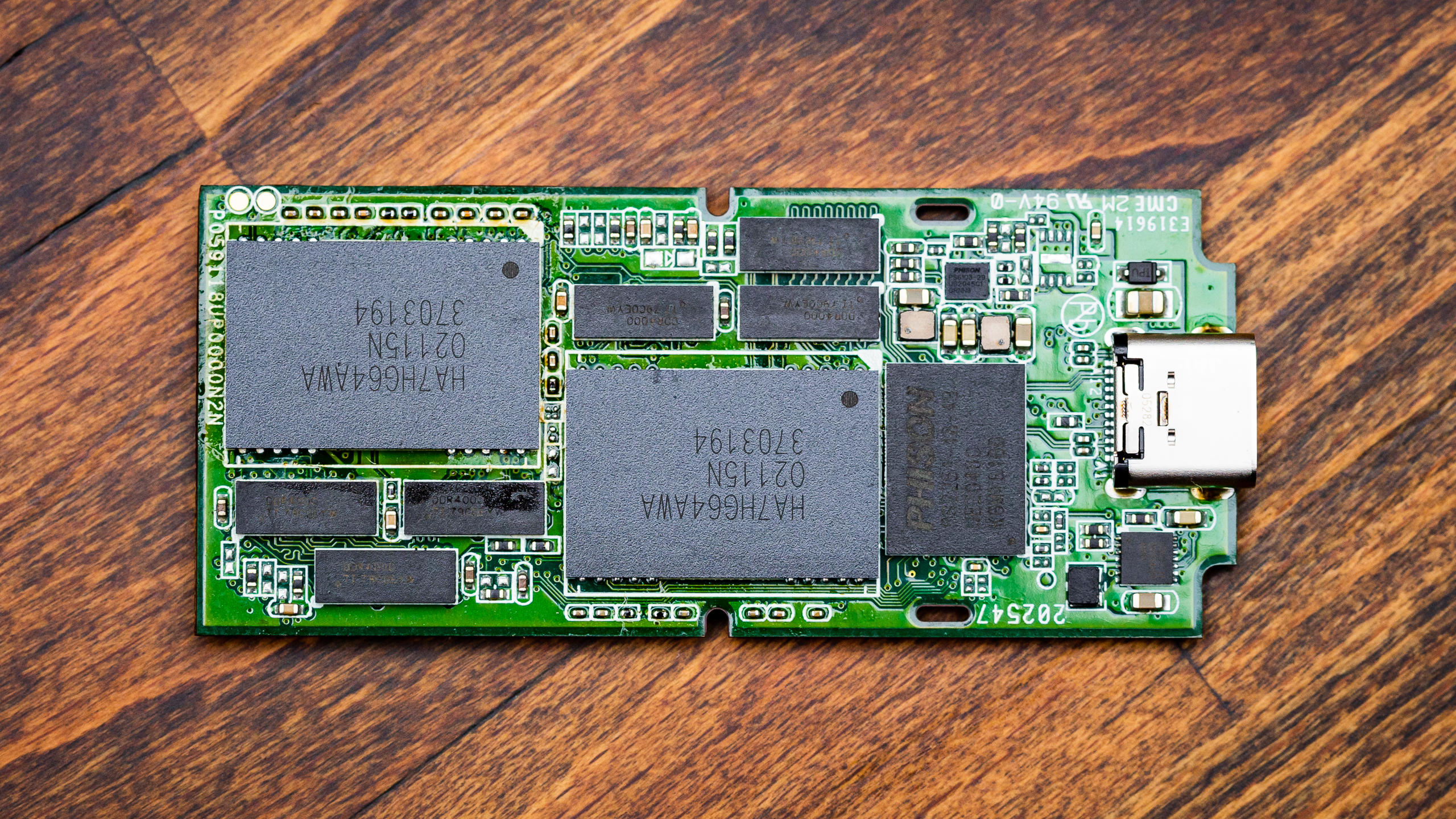

This is an embedded, or hybrid, design, which means that there’s no bridge controller. The Phison U18 is a native UFD controller which makes this closer to a USB drive in many respects. This can reduce cost, complexity, and physical size. It also usually means lower power draw with higher efficiency. It also means that the storage portion cannot be shucked. There are four NAND packages to go along with the controller, two per side.
The Phison U18 controller is only 2-channel with up to 8 chip enable for each channel, which to us suggests it’s best with 8 dies but can manage 16 just fine. Given the capacity range of the Rocket nano V2 it’s possible to use both 512Gb and 1Tb dies, the latter to reach 4TB. This somewhat limits what flash can be used as some TLC is only available at 512Gb and most QLC only at 1Tb.
This gives us a hint about what the Corsair EX100U is using - Corsair would only state 3D TLC - but Sabrent is more explicit about it. To be direct, we would be looking at either Kioxia’s 112-layer BiCS5 TLC or SK hynix’s 128-layer V6 TLC.


This looks like SK hynix’s 128-layer V6 TLC. This is very good flash, famously used in the SK hynix Gold P31, an extremely popular drive. That particular SSD stood out for its excellent power efficiency but its performance was also class-leading. As with the EX100U we see TI DDR4000 ICs which we believe help maintain a high bus speed with this much flash on a 2-channel controller. The EX100U we reviewed appears to have had the same flash but Corsair left open the door to changing it if necessary.
MORE: Best SSDs
MORE: Best External SSDs and Hard Drives
MORE: How We Test HDDs And SSDs
MORE: All SSD Content

Shane Downing is a Freelance Reviewer for Tom’s Hardware US, covering consumer storage hardware.
